On December 29, 2022, the Modernization of Cosmetics Regulation Act (MoCRA) was passed into law in the United States. The first major update to the Food and Drug Administration’s (FDA) authority over the cosmetics industry since the Federal Food, Drug, and Cosmetics Act (FD&C Act) of 1938, MoCRA has drastically increased the level of authority the Agency has over the products in this category as well as the manufacturers and processors who develop them.
The regulatory changes outlined in MoCRA officially take effect December 29, 2023. With this deadline quickly approaching, manufacturers should not wait to begin to address regulatory requirements to reduce the risk of Agency enforcement for non-compliance.
What Product Categories are Affected?
All cosmetics products, whether developed domestically or imported into the United States, are subject to these new regulatory requirements. Previously, US FDA defined cosmetics products as products (excluding pure soap) that are “intended to be applied to the human body for cleansing, beautifying, promoting attractiveness, or altering the appearance.” (FDA.gov) This definition has been expanded to include “the preparation of cosmetic ingredients with a qualitatively and quantitatively set composition for use in a finished product.” Common cosmetics products include makeup, nail polishes, lip balms, tanning and sun care products, body soaps and lotions, haircare products, tattoos, and permanent makeup.
MoCRA: Key Term Definition and Redefinition
The FDA has defined and redefined several key terms as they relate to the Agency’s regulatory oversight over the cosmetics industry. These definitions are critical for properly interpreting the regulatory framework outlined in MoCRA:
Adverse Events and Serious Adverse Events
The term “Adverse Event” has been defined as meaning any health-related event associated with the use of a cosmetic product is adverse. Serious Adverse Events are defined as events caused using a cosmetic product that result in death, a life-threatening experience, inpatient hospitalization, birth defects, infection, significant disfigurement, or medical or surgical intervention.
Cosmetic Product
Previously, US FDA defined cosmetics products as products (excluding pure soap) that are “intended to be applied to the human body for cleansing, beautifying, promoting attractiveness, or altering the appearance.” (FDA.gov) This definition has been expanded to include “the preparation of cosmetic ingredients with a qualitatively and quantitatively set composition for use in a finished product.”
Facility
The term “Facility” includes any establishment that manufactures or processes cosmetic products for distribution in the US. A facility that solely performs actions such as labeling, relabeling, packing, co-packing, holding, or distributing, is not considered a facility under this act.
Responsible Person
The “responsible person” is the manufacturer, processor, or packer of a cosmetic product whose name appears on the label of such cosmetic product
MoCRA: What are the New Regulatory Requirements for Cosmetics Products?
Manufacturers and processors of cosmetics products will now be subject to a higher level of regulatory oversight by the FDA. Those familiar with the Agency will notice that the regulatory framework outlined in MoCRA is more similar to the level of oversight the Agency has over other regulated industries within its purview. While products in this category will not be subject to a full pre-market application, manufacturers will need to ensure their facilities and products adhere to an array of strict regulatory requirements to remain compliant.
Summary of the key aspects detailed in The Modernization of Cosmetics Regulation Act of 2022:
1. Facility Registration is Mandatory
Facilities responsible for the manufacturing or processing of cosmetics products, whether based in the US or abroad, that are intended for distribution in the United States will be required to register with US FDA. Products manufactured at facilities that are not registered will be considered adulterated and at risk of enforcement.
Existing facilities in operation prior to the MoCRA Enactment Date (December 29, 2023) have one year from the Enactment Date to initially register their facilities. The last day for existing facilities to register is December 29, 2024. New facilities that begin operations after the Enactment Date must submit their initial facility registration within 60 days of initiating their operations. Facility registration must be renewed biennially (every two years) for both new and existing facilities.
Facility registrations will be required to include the following information:
- The facility’s name, physical address, email address, and phone number;
- For non-US-based facilities, contact information for the facility’s US agent;
- The facility registration number if previously assigned;
- All brand names of the cosmetic products manufactured or processed in the facility that are intended for distribution in the US;
- The product category (or categories) and the responsible person for each product manufactured or processed in the facility
2. Mandatory Product Listing
To be considered legally marketed, cosmetics products will be required to be formally listed with the FDA. Product listings can be submitted as part of the facility registration or submitted separately.
Existing products that are on-market prior to the Enactment Date will have one year to submit their product listings to the Agency, with a final submission deadline of December 29, 2024. New products that enter the market for interstate commerce after the Enactment Date will have 120 days to submit their product listings to the Agency. Product listings for both new and existing products will require annual renewal with the Agency.
Product listings will be required to include the following information:
- The facility registration number of the facility (or facilities) in which the product is manufactured or processed;
- The name and contact information of the person responsible and the name of the cosmetic product as it appears on the label;
- The applicable cosmetic category or categories for the product;
- A list of ingredients in the cosmetic product, including any fragrances, flavors, or colors;
- And the product listing number if previously assigned
3. Safety Substantiation
While premarket approval is not required for cosmetics products, the Responsible Person will be required to ensure, and maintain records supporting, that they have determined Adequate Substantiation of Safety for the products prior to market introduction. The Agency defines “Adequate Substantiation of Safety” as documented evidence supporting reasonable certainty the cosmetic product is safe. There is no “one size fits all” approach to this, and a proper strategy is critical. Required documentation includes all appropriate tests, studies, research, analysis, or other evidence or information that is considered, and has been evaluated by experts qualified by scientific training and experience. Cosmetic products that do not have data proving Adequate Substantiation of Safety are considered adulterated and risk Agency enforcement.
4. Good Manufacturing Practices (GMP) Compliance
MoCRA directs the Agency to develop industry-specific Good Manufacturing Practices (GMP) guidelines for facilities that manufacture or process cosmetic products. These guidelines will be consistent with national and international GMP standards as demonstrated in comparable industries. The Agency has been directed to publish these proposed guidelines within two years of the Enactment Date of this Act and to publish the final rule no later than three years following the Date of Enactment.
5. Serious Adverse Event Reporting and Records Access
Responsible Persons will be required to properly collect and maintain records of any adverse events related to their products. If a manufacturer or processor receives information that their product has resulted in a serious adverse event, they are required to report that serious adverse event to the FDA within 15 business days of becoming aware of said event. For one year following the serious adverse event, any new medical information related to said event will also be required to be submitted to the Agency within 15 business days of receipt.
Responsible Persons will be required to maintain records of all serious adverse events for a period of six years. In the event the FDA has reason to believe a finished cosmetic product, or an ingredient within a finished cosmetic product, is likely to present a threat of serious adverse health consequences or death to humans, the Agency has the authority to request access to all adverse events records relating to said cosmetic product or ingredient within the record holding period. The Agency will also be able to request adverse events records of any other cosmetic product that is reasonably believed to be affected in a similar manner if they believe those records could aid their investigation.
6. Product Labeling
Cosmetic product labels will be required to include the following information. Labels that have not conformed to these requirements within 18 months of the Enactment Date risk Agency enforcement.
-
Contact Information
- Labels must bear the domestic address, phone number, and electronic contact information (such as an email address or website) of the responsible person (or US Agent) so that consumers can directly report adverse events
-
Allergen Warning
- A warning will be required to be displayed on the label for each fragrance allergen included in the cosmetic product
7. Agency Enforcement
The Agency has been granted three new enforcement authorities over the cosmetics industry:
-
Suspension of Facility Registration
- If the Agency determines a product has a reasonable probability of adverse health consequences or death in humans, and the Agency believes there is a probability that other products manufactured at the same facility could be similarly affected, it has the authority to suspend the facilities registration, making all products within the facility illegally marketed in the US and at risk of Agency enforcement action.
-
Mandatory Recall
- If the Agency determines that there is a reasonable probability that a product is adulterated or misbranded and could cause serious adverse health consequences or death, they will issue a voluntary recall notice to the manufacturer or processor responsible for the product. In the case that the voluntary recall is not conducted, the Agency then has the authority to order the manufacturer or processor to immediately cease distribution of the product and conduct a mandatory recall for the item.
-
Records Access
- As previously mentioned in an earlier section, in the event the FDA has reason to believe a finished cosmetic product, or an ingredient within a finished cosmetic product, is likely to present a threat of serious adverse health consequences or death to humans, the Agency will now be able to request access to all adverse events records relating to said cosmetic product or ingredient. The Agency will also be able to request adverse events records of any other cosmetic product that is reasonably believed to be affected in a similar manner to aid their investigation.
8. Small Business Exemptions
Small businesses (defined as businesses with less than $1,000,000USD in annual gross sales for their cosmetics products in the US for the previous 3-year period and who do not manufacture or process the cosmetics products) will be given reasonable leniencies, such as reduced record keeping periods and increased timelines for achieving compliance.
9. Preemption
Although the official enactment date of MoCRA is December 29, 2023, the preemption provision under Sec. 614 in this Act went into effect immediately as of the December 29, 2022. Under this provision, the details laid out in MoCRA will preempt all differing state or local laws.
MoCRA: What Should I Do Now? Next Steps and Key Takeaways
The most significant update to the cosmetics industry regulatory requirements in the past 80 years, MoCRA poses significant challenges to companies who intend to maintain compliance following the December 29, 2023 Effective Date. Companies will need to begin work now to address these challenges, from developing and compiling safety substantiation data to deploying compliant adverse event reporting systems. These initiatives will take significant time and resources to finalize, and companies that do not begin well in advance will be racing against the clock to meet the deadline.
If you have questions about how MoCRA regulations will affect your business or would like to discuss ways to bring your company into compliance, don’t hesitate to contact us. Our team is available to answer your questions and work with you to develop a strategic plan to quickly and efficiently achieve MoCRA compliance.


